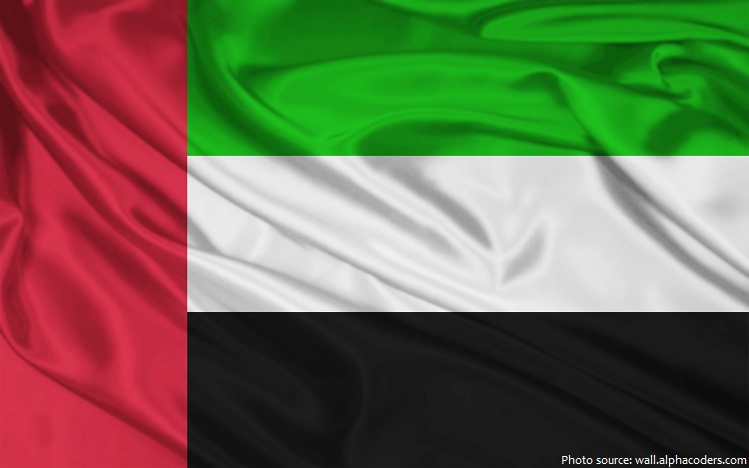
The United Arab Emirates, sometimes simply called the Emirates or or the UAE, is an Arabian Peninsula nation settled mainly along the Persian (Arabian) Gulf.
The official name of the country is the United Arab Emirates.
It is bordered by Oman to the east and Saudi Arabia to the south, as well as sharing maritime borders with Qatar to the west and Iran to the north.
The official language is Arabic.
As of 1 January 2017, the population of the United Arab Emirates was estimated to be 9,350,000 people.
It is the 114th largest country in the world by area with 83,600 square kilometers (32,280 square miles).
The United Arab Emirates consists of seven emirates – Abu Dhabi, Ajman, Dubai, Fujairah, Ras al-Khaimah, Sharjah, and Umm al-Quwain. Emirate means State or Province ruled by an Emir. (Emir means ‘commander’ or ‘ruler’ in Arabic) Interestingly, each of the seven emirates of UAE has a capital city with the same name!
Abu Dhabi is the capital and the second most populous city of the United Arab Emirates (the most populous being Dubai), and also capital of the Emirate of Abu Dhabi, the largest of the UAE’s seven emirates.
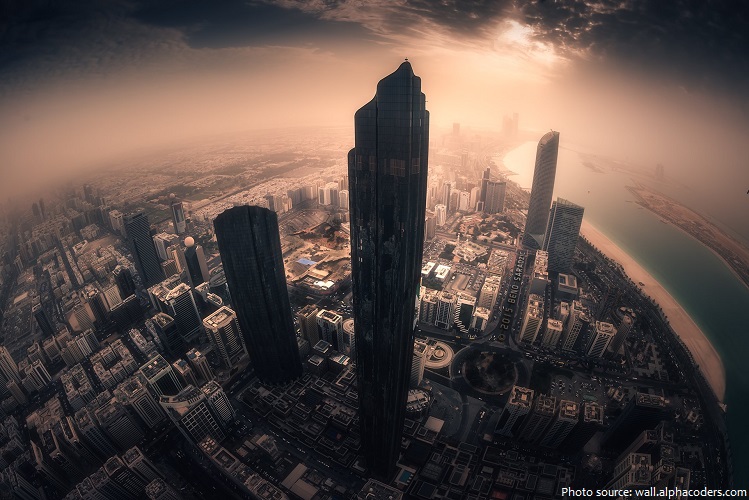
The UAE’s terrain is mostly a flat, sandy desert except for the easternmost region, where the northern tip of the Al Hajar Mountains stretches into the country from Oman to the east.
Jabal Jais is a mountain on the border between Oman and United Arab Emirates, with an elevation of 1,911 meters (6,268 feet). The highest point of this mount is located on the Omani side, but a secondary hill (in the same mountain) west of this peak is considered the highest point of the United Arab Emirates, at 1,892 meters (6,207 feet) above sea level.
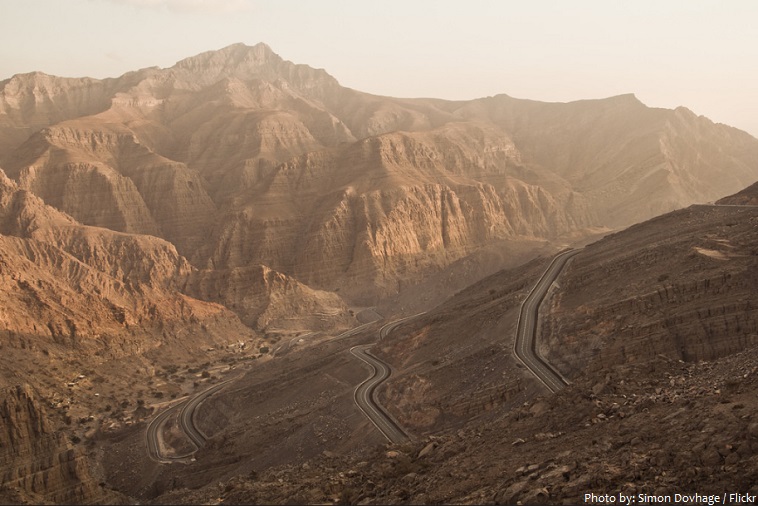
There are no rivers in the UAE.
The United Arab Emirates has 1,318 kilometers (819 miles) of coastline.
There’s a beach for everyone in the United Arab Emirates. From the city beaches along the coast of Dubai, with their high-rise background, and Abu Dhabi’s golden sand beaches along its island-littered coastline, to the luxury sweeps of sand around Ajman and the wilder beaches of the Emirate of Fujairah, you have plenty of choice.
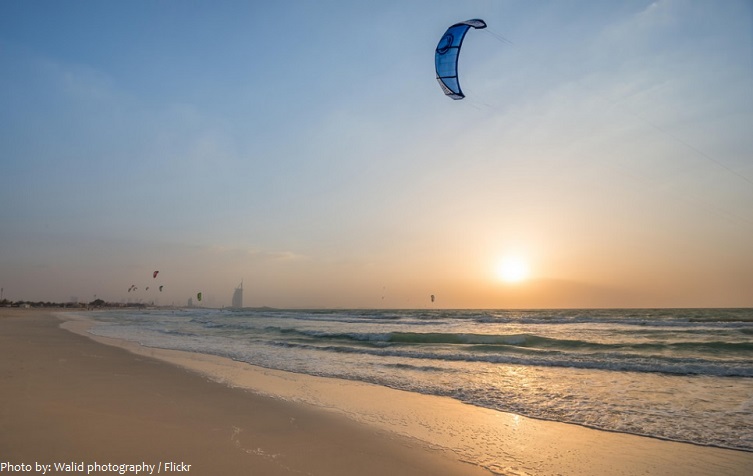
Palm Islands are three artificial islands, Palm Jumeirah, Deira Island and Palm Jebel Ali, on the coast of Dubai, United Arab Emirates. As of November 2014, only Palm Jumeirah has been completed. This island takes the form of a palm tree, topped by a crescent. After completion, Palm Jebel Ali will take a similar shape; each island will be host to a large number of residential, leisure and entertainment centers and will add a total of 520 kilometers (323 miles) of non-public beaches to the city of Dubai.
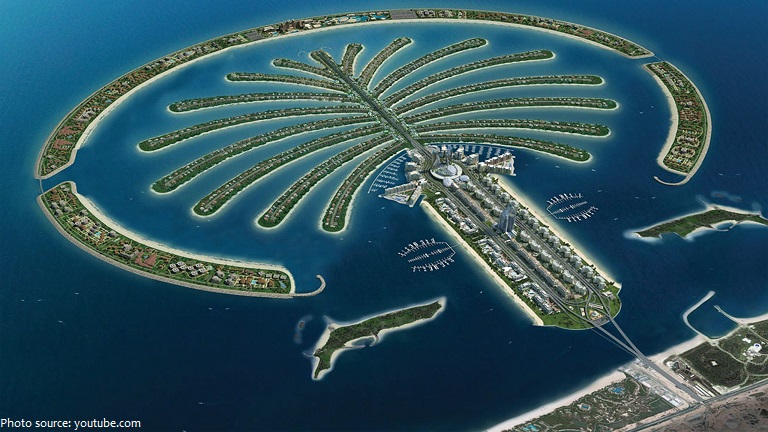
The Burj Khalifa is a megatall skyscraper in Dubai. It has a roof height of 828 meters (2,717 feet), and with its antenna included, it stands a total height of 829.8 m (2,722 ft), making it the tallest building and the tallest structure in the world.
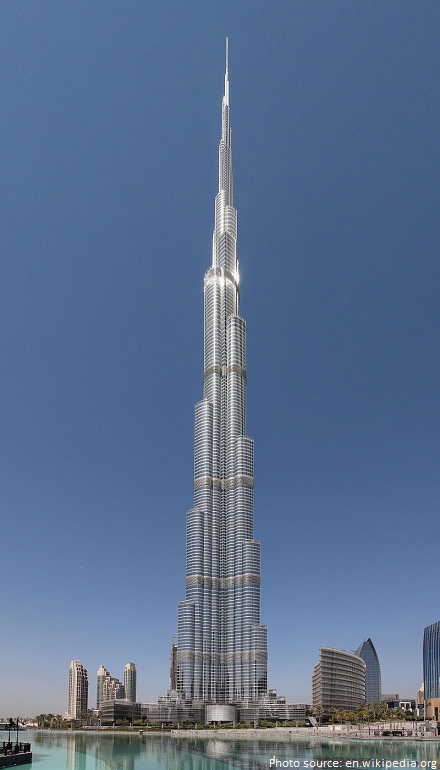
The Burj al-Arab is a luxury hotel located in Dubai. At 321 meters (1,053 feet) it is the third tallest hotel in the world (not including buildings with mixed use); however, 39% of its total height is made up of non-occupiable space.
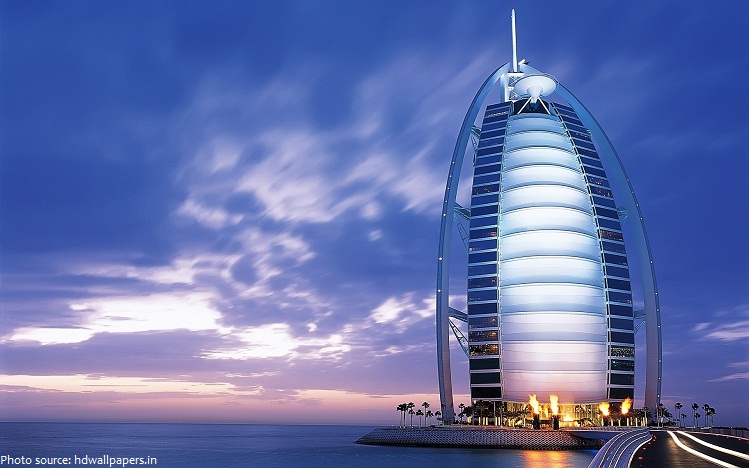
The Dubai Mall is a shopping mall in Dubai and the largest mall in the world by total area. It is the 19th largest shopping mall in the world by gross leasable area. In 2015 it was the most visited building on the planet, attracting over 80 million visitors.

Ferrari World Abu Dhabi is an amusement park located on Yas Island in Abu Dhabi, United Arab Emirates. It is the first Ferrari-branded theme park and has the record for the largest space frame structure ever built. Formula Rossa, the world’s fastest roller coaster, is also located here.

Sheikh Zayed Grand Mosque is located in Abu Dhabi, the capital city of the United Arab Emirates, and is considered to be the key site for worship in the country. The mosque was constructed from 1996 to 2007. It is the largest mosque in the United Arab Emirates.
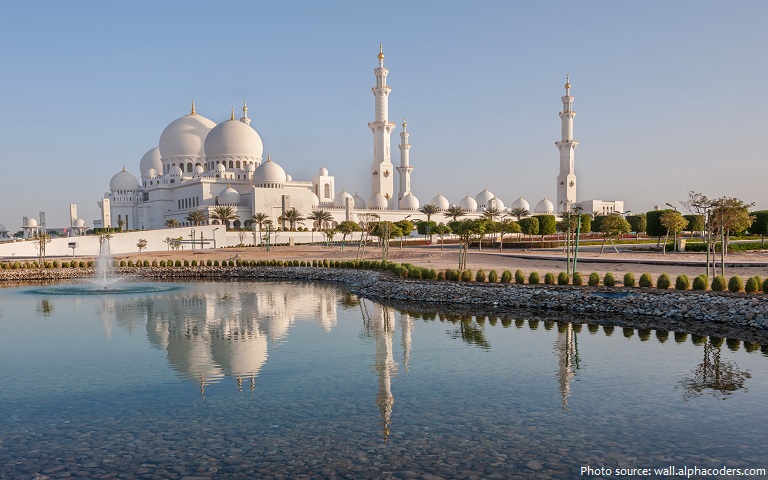
The United Arab Emirates has 1 UNESCO world heritage site.
The Cultural Sites of Al Ain (Hafit, Hili, Bidaa Bint Saud and Oases Areas) constitute a serial property that testifies to sedentary human occupation of a desert region since the Neolithic period with vestiges of many prehistoric cultures. Remarkable vestiges in the property include circular stone tombs (ca 2500 B.C.), wells and a wide range of adobe constructions: residential buildings, towers, palaces and administrative buildings. The Cultural Sites of Al Ain was declared a World Heritage Site by UNESCO in 2011.
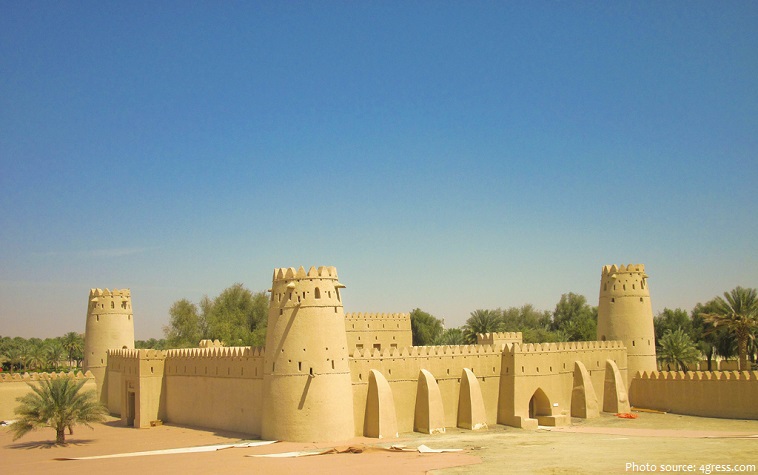
Archaeological excavations reveal that ancient civilisations flourished in the region; starting from either the Neolithic or Palaeolithic Ages (6000 B.C. – 3500 B.C.) up to the end of the Iron Age
(1300 B.C. – 300 B.C.).
The UAE’s rich history is rooted in trade and tied to Islam, which came to the region in AD 630.
The Emirates’ location between Europe and the Far East attracted merchants from India and China and was prized by Europeans, particularly the Portuguese, Dutch and British.
Seven sheikhdoms on the Arabian Peninsula combined to form a federation after Britain pulled out of this barren coastal region in 1971.
The economy of the United Arab Emirates is the second largest in the Arab world (after Saudi Arabia).
The United Arab Emirates has the seventh-largest proven crude oil reserves in the world (after Venezuela, Saudi Arabia, Canada, Iran, Iraq and Kuwait).
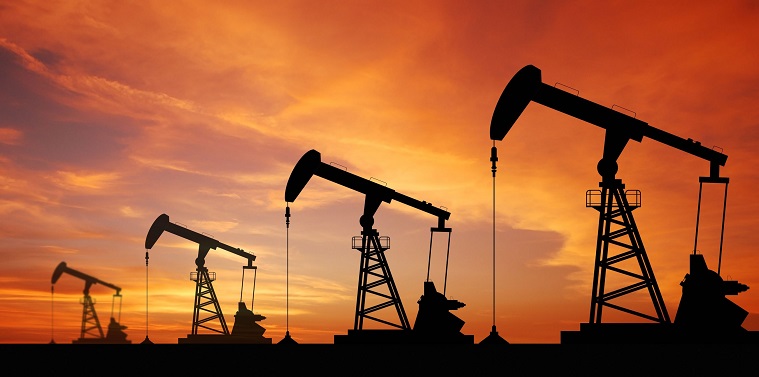
The United Arab Emirates has been successfully diversifying its economy.
The oil-rich United Arab Emirates has one of the world’s highest per-capita incomes. There are no personal income or capital gains taxes there.
The United Arab Emirates is a federation of hereditary absolute monarchies. It is governed by a Federal Supreme Council made up of the seven emirs of Abu Dhabi, Ajman, Fujairah, Sharjah, Dubai, Ras al-Khaimah and Umm al-Qaiwain.
Only about 13% of the people currently living in UAE are its citizens (Emiratis). The rest 87% are foreigners.
Until 1966, UAE (then known as Trucial States) used the Gulf Rupee, which was issued by the Government of India and the Reserve Bank of India and was equivalent to the Indian rupee, and was used to circulate outside India. From 1966 to 1973, the emirate of Abu Dhabi used Bahraini Dinar, and all other emirates used Qatar and Dubai Riyal. In 1973, the Dirham (AED) was introduced.
The Dubai police fleet includes a Lamborghinis, Ferraris and Bentleys. This is to allow them to catch speeders who can outrun other cars.
The Dubai Metro is the world’s first driverless metro rail network and has the world’s longest fully
automated metro network with a route length of 75 kilometers (47 miles).
Dubai’s international airport (DXB) is one of the busiest airports in the world. It is the the 7th busiest airport in the world by passenger traffic and the 2nd busiest airport in the world by international passenger traffic.
Masdar City, which is being built near Abu Dhabi, will be the world’s first carbon free city (no carbon based fuels). The city will be fully powered by renewable energy, and will host the headquarters of the International Renewable Energy Agency.